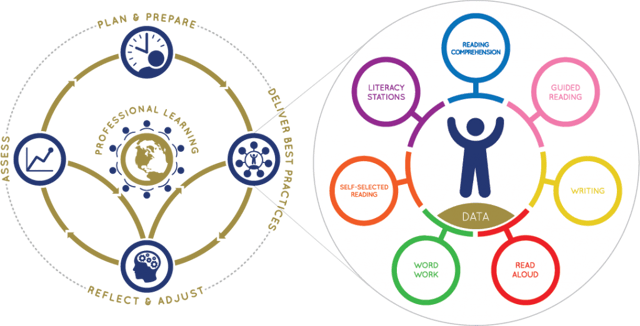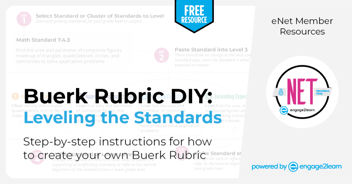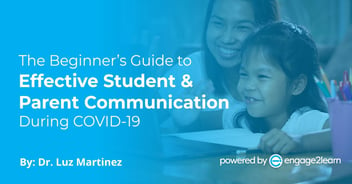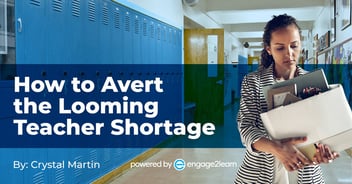Fixing the Leaky Pipeline: How to Retain Teachers through Talent Transformation
Many efforts to overcome the teacher shortage in public schools nationwide are understandably focused on increasing the supply of teachers into the pipeline. However, every new hire costs districts $5,000 – $20,000. Re-allocating the lost dollars of replacement costs toward coaching and retaining teachers already in the system is a win-win. Such talent transformation is the key to fixing the leaky pipeline and better serving our learners, while maximizing taxpayer dollars.
Fixing the Leaky Talent Pipeline
It is becoming routine for districts to start the school year with teacher openings unfilled, and shortages are projected to increase significantly in the next few years. Many efforts to overcome the shortage are understandably focused on increasing the supply of teachers into the pipeline. However, every new hire is costly to districts. Replacement costs range from $5,000 to $20,000 per hire depending on the size and location of the district. In addition, new hires are most likely to leave, as attrition is up to 30% higher for new hires. What if the teacher shortage could be solved without the additional $8 billion annual cost to fill the pipeline (Sutcher et al, 2016, p.38)? What if we could meet demand by fixing the leaky pipeline of teacher attrition?
Fixing the Leaky Pipeline vs. Filling the Pipeline
Based on research shared by The Learning Policy Institute (LPI) report, focusing on teacher retention might be the answer to the teacher shortage (2016). A surprising finding in the report shows that if annual attrition decreased from 8% to 4%, the pipeline issue would be solved (Sutcher et al, 2016, p.38). Demand would essentially equal supply, and retaining teachers would also eliminate the additional costs of hiring, onboarding, and getting teachers up to speed, as well as keeping more experienced, better prepared teachers in classrooms. In fact, LPI states, “The most important driving factor in teacher shortages is high teacher attrition,” (Sutcher et al, 2016, p.38).
Using Coaching to Retain Talent
In order to retain teachers, the report includes recommendations for more effective mentoring, support, working conditions, and career development. We know from the research that people are more motivated when they find their work to contain “three elements of the motivation formula: autonomy, mastery, and purpose. In situations where people are paid fairly, this trio drives, engages, and stimulates us to do our best work,” (Pink, 2011).
In two, very different districts in Texas, leaders have increased teacher retention through effective coaching and innovative working conditions that provide autonomy, mastery, and purpose. Both districts value teachers and principals by ensuring they have the autonomy of choice in their own professional learning and even have the opportunity to innovate to reach student outcomes. Both districts have engaged educators in creating a local vision for learning, which provides purpose to the work beyond just a standardized test. Finally, both districts invested in personalized coaching, which supports educators to work on their craft to mastery utilizing the most effective tool for professional growth: job-embedded coaching. Joyce’s and Showers’ groundbreaking study on this topic revealed that training alone translates to classroom practice less than 10% of the time while job-embedded coaching and feedback translates to classroom practice 95% of the time. It is also clear that the teacher shortage can be mitigated through a strong retention program (2002). In fact, in over 27 causal studies of “almost all other school-based interventions reviewed by Fryer (2017), including student incentives, teacher pre-service training, merit-based pay, general PD, data-driven instruction, and extended learning time, coaching had a greater effect on student achievement,” according to a recent Brown University study (Kraft, Blazar, & Hogan, 2018).
Alamo Heights ISD Invests in Coaching for Technology Integration
When Alamo Heights ISD, a small, high-performing suburban district in San Antonio, Texas, focused on integrating technology in every classroom in 2015, Superintendent Dr. Kevin Brown wanted to ensure that teachers were supported in the effort rather than becoming overwhelmed or frustrated by the expectations. Dr. Brown stated:
This is not about the technology. This is about the design of engaging experiences. Teachers need to have that tool when it’s needed for learning, and the teachers love it when they see what it does for kids. Technology isn’t innovative in and of itself, but it’s one less impediment when you have it.

The district chose to provide ongoing, job-embedded coaching as teachers implemented the Alamo Heights Blueprint for Learning, a district-designed learning model aligned to the learner profile. The district committed funds to coaching positions along with an external partner, engage2learn (e2L), to facilitate a responsible rollout of the technology along with renovated classroom micro-environments. In year one, the district asked for up to 30 teachers to apply for participating in the early adopters cohort. Each participant received funds to redesign the classroom micro-environment as well as seven (7) individualized coaching sessions from an e2L certified coach. In addition, the district coaches shadowed and calibrated to become certified as coaches themselves. In each subsequent year, the district expanded the cohort as more teachers wanted to participate.
The results have been clear in teacher satisfaction and enthusiasm. Stephen Briseno, an Alamo Heights ISD 8th grade teacher said:
The students enjoy the freedom of working at their own pace and owning their learning. The projects they presented to me were very much their own. It was one of the richer experiences I’ve had as an educator.
The district also experienced a 5% increase in teacher retention. According to the data in LPI, the increase in teacher retention translates to an annual savings of about $150,000 in hiring/replacement costs alone, which more than pays for coaching! Dr. Brown notes, “It starts with teachers wanting to do it. It’s about giving them a ton of professional development and giving them a coach who’s at their side to help them design experiences. We need to move teachers from where it’s about them being in an autonomous classroom to where they’re in an environment where they’re learning from each other, and how to do things even better. We’re not telling them what to do, we’re just providing the culture that everyone wants to be part of it.”
Mesquite ISD Scales Literacy Innovation through Coaching
Dr. David Vroonland, Superintendent of Mesquite ISD, values teachers. In 2015, Mesquite ISD, a large mid-urban district bordering Dallas, Texas, began a concentrated focus on early literacy, and Dr. Vroonland was adamant the approach be founded upon an ownership model where teachers would research, design, and lead the innovations that would increase student literacy. Dr. Vroonland stated, “Innovation in education is being highly responsive and fearless to meet the needs of students versus being compliant. Building a sense of ownership gives people flexibility to respond to the needs of the students. Being innovative is not about invention. It’s about doing what is best for our schools. We are moving from being fearful to being fearless.”
The district used a three-pronged strategy:
- Teacher-led design work of the Mesquite ISD Literacy Framework
- An external partnership with e2L to provide teacher coaching on self-selected goals
- A district-wide compensation program that would allow teachers to eventually earn as much as assistant principals without leaving the classroom.
During a 3-year rollout, 120 PK-2 classrooms implemented the Literacy Framework each year. Teachers were provided seven individualized coaching sessions in year one of implementation by engage2learn (e2L) and six individualized coaching sessions in year two of implementation by the certified district coaches. The district has made significant progress in literacy with 2nd grade classrooms in the first cohort showing 9% more students reading on-grade level and significant decreases in students requiring Tier 2 interventions.

Coaching is a Key Component to Teacher Retention
Additionally, the approach of valuing teachers and ensuring they have autonomy, mastery and purpose has resulted in increased teacher engagement, retention, and satisfaction.
In a 2017 survey, 95% of staff responded that the district supported their professional learning needs and 89% felt the district had a culture that maximized human capital.
“This type of model results in teachers working harder, but they’re happier because they’re being treated as professionals. They’re being respected as people who are quite capable of taking students to great heights in their education,” says Dr. Vroonland.
Fixing the leaky pipeline solves so many of the issues that plague public schools. Simple math says that re-allocating the lost dollars of replacement costs toward coaching and compensating teachers already in our system is a win-win. By following the lead of these two districts and the recommendations from LPI, similar results could be scaled in public schools across America. The outcome would be that more learners can have experienced, engaged, excited teachers to lead them through the 16,000 hours of their lives that they spend in school.



